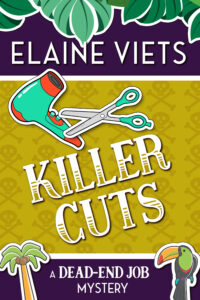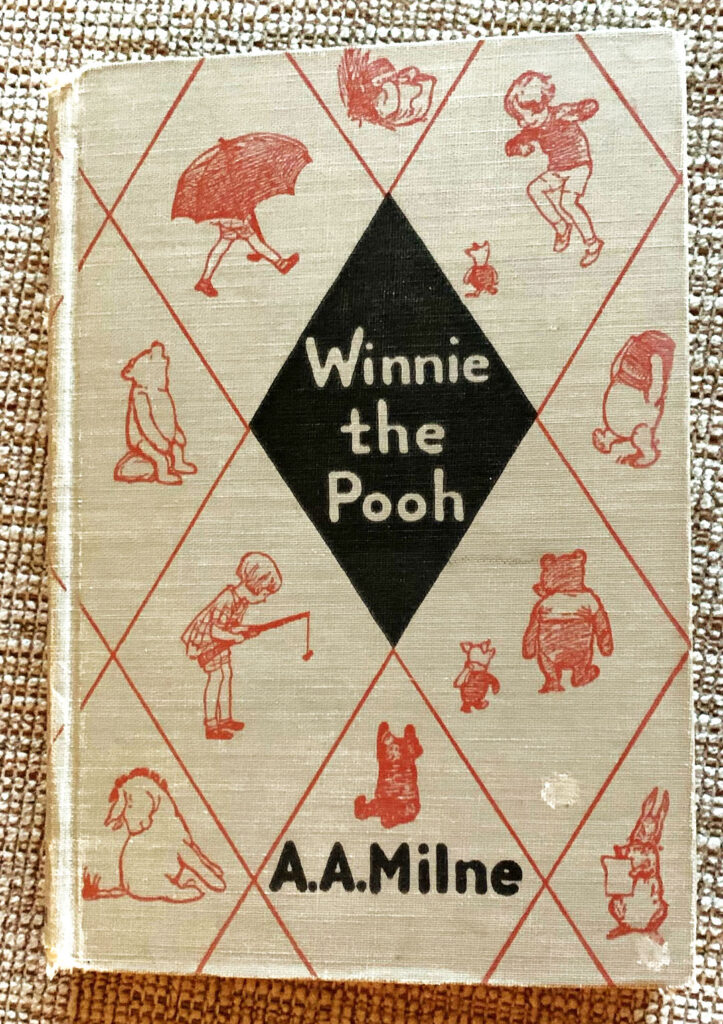 Smell is often underused in novels. Yet it can be the most powerful of all the senses for readers. Certain scents arouse memories from a special time in our lives.
Smell is often underused in novels. Yet it can be the most powerful of all the senses for readers. Certain scents arouse memories from a special time in our lives.
On this Reader Friday, please share a smell that transports you to the past, and why.

Success, by definition, means different things to different folks. Most writers probably see “success” as being published—repeatedly. They work hard, take risks, and accept that being exposed to failure is part of success. They’re confident souls and keep-on-writing regardless of what others think. Then, there are those who outwardly “make it” but, deep inside, see themselves as imposters.
Yesterday morning, I was reading an online article at Global News which is one of Canada’s leading media sites. The piece was occasionally interrupted with paid ads by prominent players like Ford, Ikea, Microsoft, Audible, and Formica who financially support Global so they can survive in the commercial news biz. All of a sudden I went, “Whoa! Am I really seeing this?”
 Before my eyes was an advertisement from Rakuten Kobo, and there was the cover of my newest publication. Kobo chose my book Between The Bikers as their featured promotion and exposed it before I don’t know how many critical eyes. And this Global ad was bought and paid for by Kobo—not me. I knew nothing about the promo before stumbling upon it.
Before my eyes was an advertisement from Rakuten Kobo, and there was the cover of my newest publication. Kobo chose my book Between The Bikers as their featured promotion and exposed it before I don’t know how many critical eyes. And this Global ad was bought and paid for by Kobo—not me. I knew nothing about the promo before stumbling upon it.
I said to Rita, “Well, will you look at this…” My wife glanced, smiled, and replied, “You’re quite the success.” I had to agree, but then I immediately thought of an earlier email exchange with a highly successful UK writer friend who told me he suffers from Imposter Syndrome (IS).
Before going into what Imposter Syndrome might be, I had to click on Dictionary.com for two definitions:
Success — noun
Imposter — noun
This got me thinking, What if I’m just an imposter, a bullshit clown, and this Kobo recognition hasn’t been honestly earned? I know that friends, family, and former police colleagues—as well as fellow writers—are going to see this thing, click on it, and expose me for what I might truly be. Oh, the humiliation…
 I don’t know who, or how many, saw the Kobo ad. I guess upcoming stats will tell if the promo was successful, but the startling experience made me think of my UK friend and what was going on with his IS insecurity. So, I did some Googling and came up with a fascinating article and self-examination on the New York Spirit psychology-therapy site titled What Is Imposter Syndrome? It opens like this:
I don’t know who, or how many, saw the Kobo ad. I guess upcoming stats will tell if the promo was successful, but the startling experience made me think of my UK friend and what was going on with his IS insecurity. So, I did some Googling and came up with a fascinating article and self-examination on the New York Spirit psychology-therapy site titled What Is Imposter Syndrome? It opens like this:
“Welcome to the world of the Imposter Syndrome. It is a secret world, inhabited by successful people from all walks of life who have one thing in common – they believe that they are not really good enough. They might be men or women, young or old. And imposter beliefs are not always related to work; I have met ‘imposters’ who feel they are not good enough parents, husbands, wives, friends or even not good enough human beings. These are all variations of Imposter Syndrome, especially when there is little objective evidence to support the sufferers firmly held self-beliefs that they are frauds.
The term ‘Imposter Syndrome’ or ‘Imposter Phenomenon’, was first coined in 1978 by clinical psychologists Pauline R. Clance and Suzanne A. Imes in a paper entitled ‘The Imposter Phenomenon in High Achieving Women: Dynamics and Therapeutic Intervention’.
The condition was described as being ‘an internal experience of intellectual phonies’ that afflicted some high-achieving women. In their paper, Clance and Imes described their sample group of 150 women as follows, ‘despite their earned degrees, scholastic honors, high achievement on standardized tests, praise and professional recognition from colleagues and respected authorities… [they] do not experience an internal sense of success. They consider themselves to be “impostors”.’ They go on to explain that these women believe they have only achieved their success due to errors in selection processes, or because someone has overestimated their abilities, or that it is due to some other external source.”
Drs. Clance and Imes list three characteristics that define Imposter Syndrome:
 The New York Spirit piece notes that Imposter Syndrome isn’t a recognized mental health condition. (I checked with the DSM-5 and it’s not.) However, through Wikipedia I found a book by researcher Valerie Young titled The Secret Thoughts of Successful Women: Why Capable People Suffer From the Impostor Syndrome and How to Thrive in Spite of It. In her book, Ms. Young identified five subgroups this syndrome falls into.
The New York Spirit piece notes that Imposter Syndrome isn’t a recognized mental health condition. (I checked with the DSM-5 and it’s not.) However, through Wikipedia I found a book by researcher Valerie Young titled The Secret Thoughts of Successful Women: Why Capable People Suffer From the Impostor Syndrome and How to Thrive in Spite of It. In her book, Ms. Young identified five subgroups this syndrome falls into.
Ms. Young states more than 70% of people experience impostor syndrome at some point in their career. That’s regardless if they’re a rocket surgeon, brain scientist, or crime/thriller/mystery writer.
Back to the New York Spirit article. I love quizzes and was most interested in taking their short self-assessment to see whether or not I had Imposter Syndrome. This is how NY Spirit described it: This quiz is based on the common symptoms outlined above and is not meant to be a diagnostic mental health tool, but rather a quick and simple way to ascertain to what degree you feel like you are an imposter. It goes like this…
How easy do you find it to accept praise?
Very hard — 1 Quite hard — 2 Quite easy — 3 Very easy — 4
When you do something well, how likely are you to dismiss it as not really much (eg it was easy, anyone could have done that, it was nothing special).
Very likely — 1 Quite likely — 2 Not very likely — 3 Not at all likely — 4
When you do something well, how likely are you to attribute your success to luck?
Very likely — 1 Quite likely — 2 Not very likely — 3 Not at all likely — 4
When you do something less well, how likely are you to attribute your failure to luck?
Not at all likely — 1 Not very likely — 2 Quite likely — 3 Very likely — 4
When you perform poorly, or fail, how likely are you to attribute your failure to your own lack of skill or not working hard enough?
Very likely — 1 Quite likely — 2 Not very likely — 3 Not at all likely — 4
When you do something well how likely are you to attribute your success to other people’s input (‘they helped me’)?
Very likely — 1 Quite likely — 2 Not very likely — 3 Not at all likely — 4
When you do something poorly how likely are you to attribute your failure to other people (‘it was their fault’)?
Not at all likely — 1 Not very likely — 2 Quite likely — 3 Very likely — 4
How important is it for you to be the best at something that matters to you?
Very important — 1 Quite important — 2 Not very important — 3 Not at all important — 4
How important is success for you?
Very important — 1 Quite important — 2 Not very important — 3 Not at all important — 4
How likely are you to focus on what you have not done well compared to what you have done well?
Very likely — 1 Quite likely — 2 Not very likely — 3 Not at all likely — 4
How important is it to you to find a ‘hero’ to befriend and impress?
Very important — 1 Quite important — 2 Not very important — 3 Not at all important — 4
How often do you feel afraid to express your views lest people discover your lack of knowledge?
Very often — 1 Quite often — 2 Not very often — 3 Not at all/rarely — 4
How often do you find yourself unable to start a project for fear of failing?
Very often — 1 Quite often — 2 Not very often — 3 Not at all/rarely — 4
How often do you find yourself unwilling to finish a project because it isn’t yet good enough?
Very often — 1 Quite often — 2 Not very often — 3 Not at all/rarely — 4
How happy are you to live with a piece of work you have done that you know isn’t perfect?
Not at all happy — 1 Not very happy — 2 Quite happy — 3 Very happy — 4
How often do you find yourself thinking that you are a fraud?
Very often — 1 Quite often — 2 Not very often — 3 Not at all/rarely — 4
How worried are you that your lack of skill/talent/ability will be discovered?
Very worried — 1 Quite worried — 2 Not very worried — 3 Not at all worried — 4
How important is validation from others to you (e.g. praise)?
Very important — 1 Quite important — 2 Not very important — 3 Not at all important — 4
According to the piece, the lower your numeric score, the more likely it is you have Imposter Syndrome. The scoring range is from 18 to 72 and (as a rough guide) any score below 36 indicates some sort of IS element is going on in your personality. Again, this is not an accredited test and has to be looked at with a bit of “ooo-kaaay…”.
You’re probably wondering how I made out. I tried to be as honest as possible, and I scored 55. I suppose that indicates I’m relatively comfortable with my butt in the chair with my fingers on the keys. What about you? Go ahead. Take the IS quiz and share your score with your fellow Kill Zoners.
Another thing for Kill Zoners… how do you define “success”? While I was surfing the New York Spirit site, I found an article by Jessica Kitching titled How Do We Measure Success? In it, she says, “If you wake up with a passion for what you do, a purpose that excites you, and a momentum to keep going, then you are a success. I am not ashamed to label myself a writer. I am a writer. I love what I do. How many other people can say that?”
* * *
 Garry Rodgers is a retired homicide detective with a second career as a coroner. Now, Garry has reinvented himself as a crime thriller writer who masquerades as a commercial success.
Garry Rodgers is a retired homicide detective with a second career as a coroner. Now, Garry has reinvented himself as a crime thriller writer who masquerades as a commercial success.
He lives on Vancouver Island at British Columbia’s southwest coast and regularly imposters as an old boat skipper. Visit DyingWords.net which is the real website and popular blog for Garry Rodgers.
I just submitted the manuscript for Stealth Attack (July, 2021), the 14th installment of my Jonathan Grave series. As I await the copy edits, it’s time to embark on the second book of my new Victoria Emerson thriller series.
Every book I write begins by typing the words, Chapter One, written in bold type, centered on the top of page one. It is the only chapter I number as I write. Subsequent chapters are labeled Chapter with a space next to it, pre-formatted in bold face type. My very last chore before submitting a manuscript is to type in the chapter numbers. And yes, inexplicably, it’s important to me that the number be written out, as in Chapter Thirty-seven.
I also type the phrase, THE END, all in caps at the bottom of the final page. It’s cathartic. And it guarantees the copy editor at least one line to delete–as if there aren’t many, many others.
There is one very practical reason for leaving all but the first chapter unnumbered: The first chapter of the next book appears as a teaser at the end of the most recently published book. And it’s a payment milestone.
Here’s the thing, though: That teaser chapter often does not survive my ongoing writing/editing process. It always changes–sometimes significantly–and if it survives it is often bumped to later in the book. I can’t remember if it was on Amazon or Goodreads, but one reviewer pummeled me for un-shooting a character who was shot in the teaser for Hellfire. A lot can happen in eleven months and 100,000 words.
I’ve learned over the years that it’s sufficient to submit a first chapter for the teaser. It needn’t be the first chapter.
We’ve established here before that I am not an outliner. But I’m not really a pantser, either. Before I type those first two words, I know basically where the story is supposed to go–what the stakes are–but when I start writing, I have no idea how I’m going to make those things happen. This is why that first chapter evolves so much or occasionally doesn’t survive final edits. If I’ve started a story in the wrong spot, I generally won’t realize it until I’m around page fifty or so.
I know going in that Jonathan Grave’s world is populated by four main characters, each of whom has to have something to do by way of progressing the story. Then there are a couple of very popular supporting players that I try to bring into each installment. And the dog. I always get a few emails from concerned readers if JoeDog does not make an appearance.
Chapter One provides limitless opportunity, but it also poses limitless challenges. Yesterday, PJ Parrish wrote about the importance of verbs. (A brilliant piece, by the way.) I concur whole-heartedly, but in the vast emptiness on the far side of those initial opening words, thousands of other words await to be chosen, embracing every part of speech that need to be selected from among what feels like an infinite set of variables. If writing a book were a math problem, it would be unsolvable.
My next move is to step off the cliff. To write something. At this stage, it doesn’t matter if the words that spill out are utter crap. That’s part of my process. For me, creativity in general–and writing in particular–is a flow. Typing those first words is like priming a pump. The process will cavitate and make ugly sounds at first, but then we’ll get the bubbles out of the system and good thoughts will start to flow.
Then, on the good days, I’ll be so inside the scenes I’m writing that I’ll merely be channeling thoughts through my fingers. On those days, the spelling is atrocious and words are often dropped, but the story is there. And by story I mean characters I know doing things I understand for reasons that excite me.
As I write this, I realize that I have discovered for the first time why I can write the last one-third of a book in thirty days or so. At that point, I’m no longer writing–I’m merely reporting what I see. And somehow, usually just a day or two before my deadline, it all works out.
And then it’s time to do it again.
What about you, TKZ family? Got any quirky superstitions or must-do habits when launching into a new project?
“The world is a hellish place, and bad writing is destroying the quality of our suffering. It cheapens and degrades the human experience, when it should inspire and elevate.” — Tom Waits
By PJ Parrish
To be, or not to be? Nah, that’s too mundane for a novel. Even though it did work for Dr. Seuss. How about “exist?” That’s a nice variation. On second thought, it sounds too Descartes-desperate for a thriller. Sigh. Well, that leaves me with…”I live.” Good grief, as I live and breathe, why is it so hard to find the right verb?
You’d think this would be easy. Pick a noun, pick a verb. Repeat until you’ve written oh, about 300 pages that might resemble a novel.
But it’s not easy. Verbs are the lifeblood of what we do. The good ones juice up our writing and help readers connect with our plots and characters.
Here’s something I’ve found: Inexperienced writers tend to be content with the first verb that pops into their head. Heck, experienced writers, in the blind heat of the first draft, do this. (my go-to crutch verb is “turned.”) Often, when you’ve latched onto a dull verb, your subconscious writer mind knows it and desperately tacks on an adverb. “He said” becomes “he said sagaciously.” Lipstick on a verb-pig.
I’ve been thinking a lot about verbs this week. Partly, because I have been trying to brush up on my French via Babbel online courses. My brain aches because of this. Verbs are important to the French and they take their conjugations very seriously. One slip of the reflexive and you’re in deep merde. (More on that later).
But verbs are on my mind also because a friend, novelist Jim Fusilli, posted on Facebook a terrific article by music producer Tony Conniff called “In Praise of Bob Dylan’s Narrative Strategies…and His Verbs.”
Now, I am not a huge Dylan fan, but I do appreciate that he is a poet. (officially). And as I read Conniff’s analysis of the song “Tangled Up In Blue,” I understood how powerful the right verb in the right place can be. Take a look at just one verse of the song:
She was married when they first met
Soon to be divorced
He helped her out of a jam,
I guess, but he used a little too much forceThey drove that car as far as they could
Abandoned it out West
Split up on a dark sad night
Both agreeing it was bestShe turned around to look at him
As he was walkin’ away
She said this can’t be the end
“We’ll meet again someday on the avenue”Tangled up in blue.
Conniff says that most of the story is conveyed in vivid verbs — the action, drama, conflict and emotion. “The verbs tell the story,” he writes, “the story of how being with this other woman, probably for a one-night stand, led his thoughts back to the one he couldn’t forget or let go. Every verse, every chapter of the story, leads back to the same woman and the same impossible emotional place—Tangled Up In Blue.”
For my part, I love the title itself because in just four words and one great verb, Dylan captures the entire mood of his story. The man isn’t just upset about losing a woman. He’s not merely sad about an affair gone bad. He’s tangled up in blue, caught in a web of regret over the love he let slip away.
The right verb gives your story wings. The wrong verb keeps it grounded in the mundane.
Now here’s the caveat. (You know I always throw one out there.) Not every sentence you write needs a soaring verb. “Said,” as we’ve said over and over, is a supremely useful verb that, rightfully so, should just disappear into the backdrop of your dialogue. And in narrative, when you’re just moving characters through time and space, ordinary verbs like “walked,” “entered,” “looked” do the job. If you try to make every verb special, you can look pretentious and, well, like you’re trying to hard. Sometimes, smoking a cigar is just smoking a cigar.
Let me give you some examples off my bookshelf of verb-age that works:
Here’s the ending of Chester Himes’s short story “With Malice Toward None.” Himes’s verb choices convey the mood of a defeated man whose soul-killing WPA job is driving him to drink and to distance himself from his materialistic wife:
He wheeled out of the room and downstairs away from her voice but at the door he waited for her. “I’m sorry, baby, I — ” then he choked with remorse and turned blindly away.
All that day, copying old records down at city hall, half blind with a hangover and trembling visibly, he kept cursing something. He didn’t know what exactly it was and he thought it was a hell of a thing when a man had to curse something without knowing what it was.
This is from John D. MacDonald’s The Deep Blue Goodbye, showing how strong verbs can spice up your descriptions. McD didn’t give us much description but when he did it came with sweet economy.
Manhattan in August is a replay of the Great Plague of London. The dwindled throng of the afflicted shuffle the furnace streets, mouths sagging, waiting to keel over. Those still healthy duck from one air-conditioned oasis to the next, spending minimum time exposed to the rain of black death outside.
Verbs are important in action scenes. Here we are, in a good one from James W. Hall’s Off The Chart:
On the top rung of the rope ladder, Anne Bonny paused and found her breath. Head down, crouched below the gunwale, she gripped her Mac-10, formed a quick image of her next move, then sprang and tumbled over the rail, ducking a shoulder, slamming into the rough pebbled deck, and rolling once, twice, a third time until she came to rest against an iron wall.
I like the mix of mundane verbs like “paused” and “formed a quick image” next to the hyperactive verbs like “sprang” and “tumbled.”
And here’s a paragraph from SJ Rozan’s novel Absent Friends, where a character remembers the September 11 attack:
Phil had been caught in the cloud on September 11, running like hell with everyone else.
His eyes burned, his lungs were crazy for air. A woman next to him staggered so he reached out for her, caught her, forced her to keep going, warm blood seeping onto his arm from a slash down her back as he pulled her along, later carried her. Somewhere, someone in a uniform took her from him, bore her off someplace while someone else pressed an oxygen mask to his face. He breathed and breathed, and when he could speak, he asked about the woman, but no one knew.
The lesson here is, the more intense your scene, the more measured you should be in your verb choices. Trust the reader to intuit, to imagine between the lines. “Running like hell” is cliche but it works because it is true to Phil’s voice. It sounds like his thoughts. Notice, too, SJ’s repeated use of the ambiguous words — someplace, someone, somewhere — to capture the chaos, rather than hitting the reader over the head with something like: “He felt confused and disoriented.”
And let me add one more quick example that James Bell quoted here on Sunday, in his post about deep back story, from a Stephen King short story. One line jumped off the page for me:
Sometimes they discussed children puddling along the wet sand with the seats of their shorts and their bathing suits sagging.
God, that’s great. It’s not even a real verb, but can’t you just see those kids on the beach?
Okay, an exercise! Let’s use the poor old verb “walk” as a lesson here. Your character is a sophisticated spy entering the Casino de Monte-Carlo to meet the evil villain Emilio Largo. He’s not just walking in; it’s a grand entrance that sets up the next plot point. How do you describe this?
I like No. 1 for its spare feel. It imparts only the bare choreography. You’d have to find other ways to convey the tension and the hero’s intent. No. 2 relies on a tacked-on adverb to convey Bond’s attitude. It works okay, imho. No. 3 is tone-deaf and over-wrought. “Sauntered” is an okay verb but way too twee for Bond. And then we get hit over the head with the king metaphor, made even worse by the panther nonsense. If your verbs are strong, you don’t need to surround them in a thicket of thorny metaphors. No. 4 works, imho, but I’d try to make it better on second draft.
I will leave you with one last thought about getting your verbs right. When I first started learning French, my teacher warned us that French is filled with faux amis — false friends. Some verbs look correct but become something entirely else if you mess up the pronunciation or use the wrong tense.
One day in class a guy, speaking in halting French, said that last night his girlfriend kissed him goodbye. Our teacher laughed and we all just looked at each other, confused. In French, a kiss is “un baiser.” So the guy assumed the right verb was “baisser.” Which correctly means that last night he was…screwed.
A sigh is just a sigh, But a kiss isn’t always just a kiss.
The biggest complaint about social media is that it’s time-consuming. While I agree, there are tools to help speed up the process. With Social Media Management tools, we can spend a few minutes each day (or weekly) scheduling posts to go live while we’re busy with other things. Then all we have to do is check in here and there to engage with our audience. These apps help us to appear active on social media without absorbing large chunks of time.
My favorite social media management tool is Hootsuite. The free plan allows us to schedule up to 30 posts, which is plenty for a week. Once a post goes live, Hootsuite deducts it from our total. We can add three accounts (Twitter, Instagram, LinkedIn, Pinterest, etc.). Please note: As of September 11, 2020, Facebook no longer allows third party access. Figures, right? They’re the biggest time-suck of all.
We learn better with visuals, so let’s dig in.

Adding social media accounts is easy. In the Hootsuite dashboard go to Account. See my tiny photo in the bottom left corner? That’s where “Account” is located. Hootsuite will prompt you to add accounts. Once they’re added you can find them under “Private social accounts.” Ignore “Share Access” unless you have a VA or personal assistant to manage your social media.
The left column is our toolbar. Ignore the trophy for now. That’s where you can upgrade to the paid plan, but it’ll cost ya $29. monthly.

The icon below the trophy is where we create posts. I don’t use Hootsuite for Pinterest, but if you want to, this is also the place to create pins. When you click “Post” it’ll open this screen…

Some folks post to all their accounts at once, but I don’t recommend it. Each social media site has different requirements. For example, Twitter has a character limit and it’s best to only use 1-3 hashtags per post. Instagram has image restrictions and the more hashtags the better.
I’ll show you an easy way to repost the same article to different platforms later. For now, choose one account to “Post to.” Then drop down to “Text.” If you add your link first, Hootsuite will grab the image off the article. Or you can upload a new image. Another nice feature of Hootsuite is the built-in link shortener. Highlight the link and click “Shorten with Ow.ly.” Easy peasy.

I create my own images, but that’s a personal preference. If your article doesn’t have an image, don’t fret. Hootsuite comes with its own media library. Click the words: “Open media library” and the library will open in the preview window (where Kermie’s praying).
Now, suppose the image is too big. No problem. Click “Edit image” and tweak it until the image fits in the preview window. Once we’ve told Hootsuite which social media account we want to post to, it guides us.
To the left of “Edit image” is “Create alt text.” Alt text makes your content more accessible and improves the SEO. Describing your images also helps people with disabilities to engage with your content.
Next, we have the option of posting now or scheduling to post later. Rarely, if ever, do I immediately publish. My favorite thing about Hootsuite is its ability to publish posts while I’m writing.
When we click “Schedule for later” this window pops up…

As you can see, I scheduled this post for Wed., Nov. 18 at 1:05 p.m. Click “Done” then “Save edits” and you’re done.
Let’s go back to the left sidebar. The icon below Create Post is Streams. Which looks like this…

We build boards however we want. I created a separate board for each social media account and then one complete board to show all my connected accounts on one screen. The above image shows only my Twitter board. I’m using it to show you another cool feature. The three columns to the right are called Streams, which we configure to suit our individual needs. There are several available options. I chose “My tweets,” “Mentions,” and “Retweets.” Play around with the configuration till it works for you.
On the sidebar the next icon down is Publisher. Here’s what it’ll look like once you’ve scheduled your posts…

I like to stagger my publishing times so it doesn’t feel automated to my audience, but that’s another personal preference. You may want to schedule every day at noon. Hootsuite allows us to schedule posts at any time of the day or night. If you need to reach readers in a different time zone, then schedule posts to go live while you’re asleep. 🙂
Okay, here’s the handy trick I hinted at earlier. Hootsuite allows us to duplicate posts to publish on a different platform. With the Publisher open, click any post you published or scheduled, and the following screen opens.

By clicking the three dots in the upper righthand corner next to “More options” the “Duplicate” box pops up. By clicking “Duplicate” it opens the post as it appeared when we published or scheduled it. Only now, it’s in a New Post format.

In “Post to” swap one social media account for another. As I mentioned earlier, you may need to tweak the image and add/subtract hashtags, but that’s it. Either “Post now” or “Schedule for later.” Or we can leave the post as is and just schedule it to go live again on a different time/day. Duplicating posts saves us from having to create 30 new posts per week, if we’re only scheduling on a weekly basis.
With the free plan, we also have the option to schedule a new post as soon as a previous one publishes. As long as we don’t climb higher than 30 posts scheduled at one time, we’re good. An upgrade comes with more bells and whistles but $30 for this and $30 for that adds up after a while.
Once we schedule the duplicate post, Hootsuite brings us back to the Publisher. At the top click “Content” and all our published posts show on the screen.

We can filter by social media account or view Drafts, Scheduled, or Past Scheduled posts.
Hootsuite offers numerous ways to save us time. I’ve only scratched the surface, but I’m trying not to overwhelm you. These steps may seem like a lot of work. They’re not. Once you get used to creating posts, you’ll zip right through the process. Remember the 80/20 rule, 80% valuable content, 20% book marketing (90/10 is even better). If you struggle with the 80% part, post a quote from the book you’re reading (include title/author). Or share a blog post or pet photo. The point is to keep your audience engaged.
I’ve only concentrated on one social media management tool, but there are others. Some free, some paid. If you’re still hopping from one social media site to another, you’re wasting valuable writing/research/reading time.
If you haven’t tried a social media management tool yet, I hope this peek into Hootsuite demonstrates its time-saving benefits. Do you use social media management tools? If so, what’s your favorite? Any tips to share?
by James Scott Bell
@jamesscottbell
 Back in 1988, on the day I decided I had to become a writer, I laid out a plan. I would read books on the craft, even though I’d been told several times that you can’t learn to write by reading writing books (which I soon discovered was a crock). I also went to my favorite used bookstore, the marvelous A & M Booksellers in Canoga Park (sadly, they had to close up shop when the 2008 recession hit; happily they still do business online). This wonderland had a large, revolving inventory of popular paperbacks. On this day I bought an armload of books by Grisham, King, and Koontz. I wanted to read them systematically to try and figure out what they did that was so good.
Back in 1988, on the day I decided I had to become a writer, I laid out a plan. I would read books on the craft, even though I’d been told several times that you can’t learn to write by reading writing books (which I soon discovered was a crock). I also went to my favorite used bookstore, the marvelous A & M Booksellers in Canoga Park (sadly, they had to close up shop when the 2008 recession hit; happily they still do business online). This wonderland had a large, revolving inventory of popular paperbacks. On this day I bought an armload of books by Grisham, King, and Koontz. I wanted to read them systematically to try and figure out what they did that was so good.
It was a superb education.
One thing I noticed with Mr. King was something I didn’t have a name for. It just seemed to me that his characters were so … real. He gave them lives that were vivid and detailed. And that, more than anything else (in my estimation) is what has made King so immensely popular. He weds an imaginative plot with characters you can almost touch. I believe he, like Dickens, will be remembered as much for his characterizations as his twisty-turny storylines.
As was my wont in those days, I wrote a note about that in my ever-expanding document about technique. Eventually I called it “deep backstory.”
I was reminded about this the other day when I read one of his short stories, “The Things They Left Behind,” which is included in his collection Just After Sunset. It’s a moving story about a man with survivor guilt because he “played hooky” from his job at an insurance company in the Twin Towers on 9/11. Of course, several of his friends and co-workers died.
One day the narrator, Scott Staley, returns to his locked apartment and finds a pair of distinctive sunglasses with red frames on a table (they had not been there when he left). But wait…sunglasses like these had belonged to Sonja D’Amico, a colleague of his who died on 9/11. Also, leaning on a wall, is a baseball bat. But not just any bat. It’s a bat that another dead co-worker, insurance adjuster Cleve Farrell, had at his desk. Farrell had used a hot iron to burn CLAIMS ADJUSTOR into the wood.
How could these items possibly be here? That, of course, is a King-ish story question. And in another writer’s hands it might have become a mere puzzle. But King weaves in backstory magic that brings the characters marvelously to life.
Here’s an example of what I mean:
I felt that way, too. Yes indeed. Because those sunglasses had to be gone—long-time gone, as the Dixie Chicks say. Ditto Cleve Farrell’s Claims Adjustor. (“Besbol been bery-bery good to mee,” Cleave would sometimes say, waving the bat over his head as he sat at his desk. “In-SHOO-rance been bery-bery bad.”)
King likes to reference popular culture in his stories (e.g., Dixie Chicks), which some writing teachers warn against. Bosh, I say. Even if someone reading the story years hence has never heard of the Dixie Chicks, it sounds real and truthful.
But look especially at the parenthetical bit. Those of us old enough to remember the early years of Saturday Night Live will recognize the words of Chico Esquela, a Dominican baseball player created by cast member Garrett Morris. We’re talking late 70s now. But even if a reader of King’s story in 2020 has no idea who Morris-as-Chico was, the material still works. It sounds unique and lifelike, something a middle-class insurance adjustor might have said when horsing around.
Later, Scott hears ghostly voices in conversation:
Sometimes they talked about the picnic at Jones Beach—the coconut odor of suntan lotion and Lou Bega singing “Mambo No. 5” over and over from Misha Bryzinski’s boom box. Or they talked about Frisbees sailing under the sky while dogs chased them. Sometimes they discussed children puddling along the wet sand with the seats of their shorts and their bathing suits sagging. Mothers in swimsuits ordered from the Lands’ End catalogue walking beside them with white gloop on their noses. How many of the kids that day had lost a guardian Mom or a Frisbee-throwing Dad? Man, that was a math problem I didn’t want to do. But the voices I heard in my apartment did want to do it. They did it over and over.
I find that paragraph brilliant. The sense of smell and sound and sight. And the specificity of detail. Not just music, but Lou Bega singing “Mambo No. 5”; not just swimsuits, but swimsuits ordered from the Lands’ End catalogue.
Now, Mr. King is a well-known pantser. His approach, as explicated in his book On Writing, is: The situation comes first. The characters—always flat and unfeatured, to begin with—comes next. Once these things are fixed in my mind, I begin to narrate.
So all of that good, deep backstory comes out of King as he writes. That explains things like that parenthetical, above. He thought of a character with a bat, then his imagination went into overdrive to personalize it … it was a baseball bat … a voice from the memory chamber echoed in King’s mind: “Besbol been bery-bery good to mee.” Wait. That was Chico Esquela, right? Yeah, and that’s something unique this character might have said.
The character was coming to life before his eyes during the writing. But there’s no reason you can’t do this discovery before you write. In my book, Writing Unforgettable Characters, I recommend creating a “voice journal” for each character:
This is a free-form document where I just let the character talk to me. I might prompt him with questions, as if I’m doing an interview. “Tell me about your home growing up.” Or “What’s your philosophy of life?”
What I want is for the character to begin talking to me in a voice that is not mine. I’ll keep up this free-form writing until that voice emerges. And though I’m doing this mainly for the sound of the voice, I also end up with background material the character shares with me.
So either way, be ye plotter or pantser, allow your writer’s mind some wild time to dream up deep backstory. Write down a lot of it, then choose the best parts to weave into the narrative. Like the marbling in a rib-eye steak, this will add marvelous flavor to your story.
The painting at the top of this post was made for me by a young lady who lives next door and her best friend who lives on the next street.
There is a backstory, of course.
I have lived in my current neighborhood for 26 years and counting. It has changed over that quarter-plus century from having lots of kids running around to almost none at all to…well, lots of kids again. It’s a better place with the children, who I’ve described recently. One of the reasons is that the presence of children usually puts dogs in the mix as well. That brings us to Sadie.
I’ve mentioned before in this space that the dogs in the neighborhood have me trained. Felix, the feral cat who I have dubbed “the master of the kitten face,” still shows up as well. It is Sadie, the dog who lives next door, who has things down to scripted performance art.
It took a while. Sadie was rescued by my very nice and patient neighbors almost two years ago. Sadie took a short time to adapt to her new and wonderful living situation. Once she did, Sadie seemed to be in constant motion for almost a year, restrained only by the Invisible Fence that her family installed for her. I would occasionally toss her a treat (okay, once a day…well, sometimes, twice a day) and she gradually got used to that when she realized that there was no downside to it.
Then it got interesting. We started a daily performance that goes something like this. She barks and I come out. I walk over and tell her that I’m not sure if I have anything for her. I pull open my empty pocket, at which point she looks at my other pocket. Did I mention that she is a very smart dog? I then reach into my other pocket, but before pulling the treat out I tell her that it is MY treat, the only one I have. I let her know that she can’t have it but that because I love her I will let her sniff it. I usually only get the treat halfway out before she snatches it (she has never so much as grazed even one of my fingers) and takes off running, with me in pursuit, yelling “Hey! That’s my treat! Come back here!” Sadie gleefully runs around the house, reverses course, bumps me as she runs by, evades my grasp, and in the meanwhile just tears the stew out of her family’s garden, mulch, and the like. They patiently (well, usually patiently) sweep it up and let Sadie (and me) have our fun. The artwork doesn’t just attempt to capture the moment. It nails it perfectly, right down to the grin Sadie would make if she had the right facial muscles to do so.
This activity has attracted an audience among some of the neighborhood children, who laugh as hard the next time they see it as they did on the first. I suspect/hope that, as a result of this repetitive spectacle they seemingly never tire of, they will grow up reading thrillers and maybe even writing them. All of the elements of a good story are there. There is conflict (yes, it’s made up, but it’s still conflict), a McGuffin —I doubt that when Hitchcock coined the term he envisioned that the sought-after object that triggered the action in a dramatic work could ever be a dog treat, but it’s a funny world — some explosions (mulch really goes flying), a sympathetic character (it isn’t me), and a resolution that makes everyone happy (Sadie keeps the treat and eats it). A story at its foundation can be that simple.
Those of you who count yourselves as adults or grownups (notice that I exclude myself from both categories) might consider this account to perhaps make a great “beginning reader” storybook for young children. I can see an editor sending it back to an author with instructions to “grow” the story a bit. It would be easy, however, to quickly turn this into an adult 1) mystery, 2) thriller, or 3) horror novel. Examples follow.
Mystery: Sadie comes running back around the house carrying the severed head of a neighbor nobody likes (I have a model for him, too!) Whodunit? Suspects abound. Many suspects.
Thriller: Sadie doesn’t come back. Our intrepid treat tosser starts looking for her, finds her invisible fence collar on the ground, and runs between houses over to the next street, looking for her. Two guys are trying to get her into their car. Fisticuffs ensure. Sadie is rescued, but the treat tosser finds himself in trouble and doesn’t know why. Little does he know that the fate of the world is at stake!
Horror: When Sadie runs around the house, the assembled children run in the opposite direction laughing in delight. Then the treat tosser hears the kids screaming, and Sadie barking and growling. The barking cuts off with a high-pitched yelp and the screams of the children intensify then drop off. The treat tosser runs around the side of the house to find a one-armed woman holding a dripping machete and advancing toward him at speed.
I’m so glad that you like animal stories.
The ultimate lesson here is that you can take just about any situation, no matter how joyful, and turn it into something dark in a heartbeat, setting up a conflict that begs for resolution.
Do you have any daily rituals — peculiar to your own life — that are seemingly ordinary but that you could use as a jumping-off point? Please share if you wish.
I have two things before I go. Here for your enjoyment is a video of our neighborhood star getting her reward for bringing so much joy into the hearts of all:
The second is that I will be here for the next couple of Saturdays. At some point after Thanksgiving — we anticipate December 5 — we will have a doctor in the TKZ house when physician and author Steve Hooley joins us on alternate Saturdays. I assure you that the wait will be worth it.
Thanks again for visiting.
A desperate writer sent me this email. “I am having difficulty getting back to my story,” he said. “Maybe it’s Covid hangover…. I need to rewrite some stuff in my earlier chapters and I can’t get into it. Argh!!! So tell me, is this common?”
You bet. I’ve been stuck, too – and many of my writer friends are tearing their hair out. Some are so desperate, they’re threatening to give up writing. Blame it on Covid-19, your day job, your kids, (insert your worry here), we’re not keeping those computer keys clacking.

I was in a deep funk for three weeks before I finally broke out of it.
Here’s how I got back to writing.
My next Angela Richman, Death Investigator mystery is due in January. I was off to a good start – I crafted the plot, created a catchy opening chapter, introduced the main characters, figured out who was the killer, all the things writers do when we’re starting a new book. I happily banged out six chapters. And then . . .
The words dried up.
I couldn’t go forward. I tore up chapter after chapter. I stared at the screen, willing the words to form on the page. The blank space taunted me.
I paced the house. I surfed the Net, looking at cute cat pictures. I fell for click bait (Did you know the Princes in the Tower may be buried in Westminister Abbey, but Queen Elizabeth won’t let anyone test their DNA?). I ate half a pound cake. Still nothing.
Gloom descended, and it didn’t help that Hurricane Eta was bearing down on South Florida, bringing lashing rains and flooded the streets.
Last Saturday, I went to a Sisters in Crime chapter Zoom meeting – a plotting seminar by mystery writer Annette Dashofy. Annette had us plot a mystery, based on her method, and things quickly went off the rails. Our mystery started with a dead female politician who was killed in her office. The awful plot included an unfaithful husband, an ex-stripper boyfriend, a cheating reporter, and an unmentionable murder weapon. The red herrings would leave you red-faced. But we had a lot of laughs. After much laugher – and some very serious plotting strategy – I realized I had a giant hole in my plot. After the meeting, I reworked the plot, put in another murder and more red herrings. The dam broke. I was back writing. I was going forward. I’d been too isolated.
So when you’re stalled:
(1) Talk to other writers.
Many writers are solitaries, but we need to talk to our own kind. We used to do that at chapter meetings, conferences and mystery conventions, but those are canceled thanks to the pandemic.
 When you’re stuck, schedule a Zoom meeting or set up a FaceTime chat. Talk over tea. Make a lunch meet or coffee break. Or my personal favorite, a cocktail hour – a whine and wine session with one or more writer friends.
When you’re stuck, schedule a Zoom meeting or set up a FaceTime chat. Talk over tea. Make a lunch meet or coffee break. Or my personal favorite, a cocktail hour – a whine and wine session with one or more writer friends.
When I was stuck earlier in the year, I had a Zoom lunch with a writer friend and ran my plot past her. She listened carefully and then said, “You know, there’s not a single likeable person in your novel.” She was right. I changed the characters. Thanks to her, I could write again.
(2) After meeting with those writers, my head was buzzing with ideas.
I started taking notes again, always a good sign. My subconscious was working. I keep a notepad on my night stand and write down ideas that I get in the middle of the night. Some of these ideas are useless – I once scrawled “Call California” on a notepad. The next morning, I had no idea what that meant. After all, it’s a big state.
Sometimes, I can’t even read what I wrote.
More most often, I have the start of another chapter, or a nice fat red herring.
(3) Here are some ways to get in touch with other writers:
Sisters in Crime has a number of free seminars on its national Website. https://www.sistersincrime.org/ Also, check with the individual chapters. Sisters in Crime is also sponsoring NaNoWriMo, and it’s not too late to join:
https://www.sistersincrime.org/events/EventDetails.aspx?id=1427737
Most of the Mystery Writers of America chapters have monthly virtual programs. The Florida MWA Chapter has a free virtual program November 21, called “Seriously Series: Why and How to Write Series Fiction” given by Joanna Campbell Slan. Members can sign up here: https://mwaflorida.org/events/monthly-meetings/
The International Thriller Writers Association has their Virtual Winter Thrills Program, Jan. 11 to March 18. You can buy the whole package or choose individual session for $35 each. Here’s the information. https://web.cvent.com/event/8e0e649d-5c1c-4c55-be1c-575146f15ebf/summary?rp=00000000-0000-0000-0000-000000000000
What do you do, TKZers, to break out and break the isolation?
*************
 Need a good laugh? Read KILLER CUTS, my eighth Dead-End Job mystery. Buy the e-book for $1.99 – or free on Kindle Unlimited. https://tinyurl.com/y6yopjkp
Need a good laugh? Read KILLER CUTS, my eighth Dead-End Job mystery. Buy the e-book for $1.99 – or free on Kindle Unlimited. https://tinyurl.com/y6yopjkp
What Winnie the Pooh Taught Me About Writing
Terry Odell
First, on this Veterans Day, a thank you to all who have served.
 When I was a child, my dad would read Winnie the Pooh (the REAL one, not the Disney version) to me and my brother. I loved his voices (Years later, when an old movie was playing on the television, I heard Eeyore’s voice. I ran out to look and it was a W.C. Fields movie. I didn’t know my dad had been doing “real” voices when he read—but I digress.)
When I was a child, my dad would read Winnie the Pooh (the REAL one, not the Disney version) to me and my brother. I loved his voices (Years later, when an old movie was playing on the television, I heard Eeyore’s voice. I ran out to look and it was a W.C. Fields movie. I didn’t know my dad had been doing “real” voices when he read—but I digress.)
Another thing I remember from my dad’s reading was the way he began each chapter in a Very Important Voice. And the way each chapter was titled, “In Which…” followed by a few words telling us what the chapter was about.
(Kind of like “circles and arrows and a paragraph on the back of each one…” but I digress again.)
Although I certainly don’t title my chapters, the “In Which” approach helps make sure I’m putting something on the page that belongs there.
Too often, it’s easy to get carried away with description, or dumping in some back story, or including that “wonderful” scene that came to you when you overheard a conversation at the coffee shop, or salon, or when you were people watching and saw someone who just had to be in the book. So you write it, and it’s wonderful, and you’ve captured the moments perfectly. But is it moving the story. Is it something worthy of including in your “in which” summary of the scene.
Because you should be summarizing the scenes, either before or after you write them. And there need to be plot points (which is the official writerly term for “in which”). You’ll notice I used the plural. A scene had better be carrying more than one. While there’s no rule, and no exact number, I’d recommend shooting for three. Scene length, of course, can cause variations, but whatever happens in that scene needs to relate to the story.
Which brings me to kinds of scenes. Here’s a quick summary, gleaned from a RWA workshop, although most will carry over to any genre.
Do you ever find scenes in books you’re reading, even very well-written scenes, that leave you wondering what they’re doing there? Have you found them while writing your own books?
 My new Mystery Romance, Heather’s Chase, is available at most e-book channels. and and in print from Amazon.
My new Mystery Romance, Heather’s Chase, is available at most e-book channels. and and in print from Amazon.
Terry Odell is an award-winning author of Mystery and Romantic Suspense, although she prefers to think of them all as “Mysteries with Relationships.” Follow her on Facebook and Twitter.